The fifth year of Bleeding Heartland’s Iowa wildflower Wednesday series kicks off with the native plant that got the ball rolling in 2012. Bloodroot (Sanguinaria canadensis) is native almost everywhere in North America east of the Rocky Mountains. Follow me after the jump for more pictures of one of the first spring wildflowers to bloom in Iowa woodlands.
This post is also a mid-week open thread: all topics welcome. I recommend the Iowa Wildflower Report and Raccoon River Watershed public Facebook groups for native plant lovers and nature photographers.
For a botanically accurate description of bloodroot foliage and flowers, check out the Illinois Wildflowers website and the Lady Bird Johnson Wildflower Center at the University of Texas in Austin.
The plant’s common name comes from the red liquid that can be drawn out of roots or leaves. Apparently some people grow bloodroot because the root extract has medicinal uses.
Unlike many native plants, where foliage appears weeks before flowers bloom, the bloodroot flowers before the leaves have spread out.
The leaf is unobtrusive when the flower first blooms.
The bloodroot flower here is larger than the leaves just above it, which are part of the same plant:
In the evening, bloodroot flowers close up and look like this:
At the Ledges State Park last spring, I saw lots of bloodroot growing alongside Dutchman’s breeches. The fern-like foliage belongs to the Dutchman’s breeches; the bloodroot leaves have yet to fully unfurl.
Here’s a bloodroot blooming near the splotchy, notched leaves of Virginia waterleaf, which will flower in a month or two.
This bloodroot flower is past its prime, but the leaves have a lot of growing to do.
Long after bloodroot flowers are gone, the unusual leaves are noticeable in wooded areas. Unfortunately, the rue anemone blossoms are overexposed here, but near the top center of the frame you can see large leaves of bloodroot plants. Near the upper left and the lower right, you can see more Virginia waterleaf foliage.
Here’s a closer view of those bloodroot leaves. The rounded arrow-shaped leaves of violets are nearby, along with the splotchy leaves of Virginia waterleaf.
The flowers in this picture (also taken last spring) are early meadow rue. In the middle right and lower left corner, you can see the large leaves of bloodroot, which bloomed earlier. Mottled leaves of dogtooth violets (also known as trout lilies) are scattered throughout this shot. I think that the curved plant emerging just below the meadow rue is false Solomon’s seal.

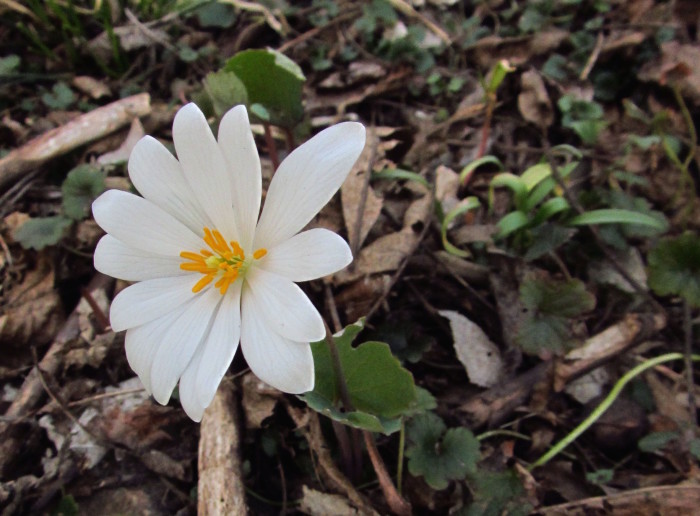
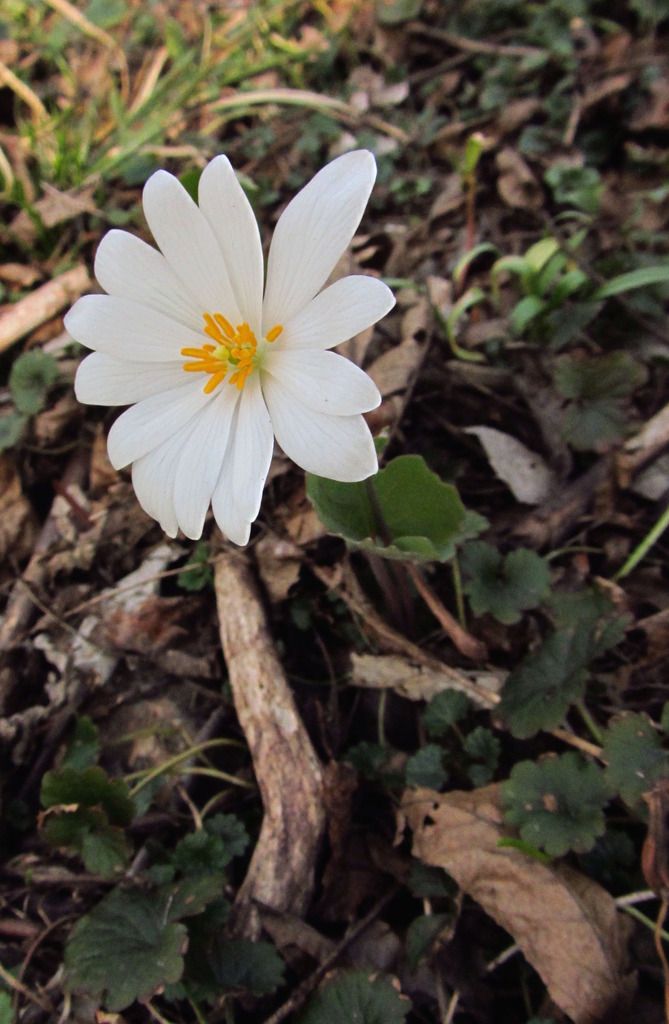

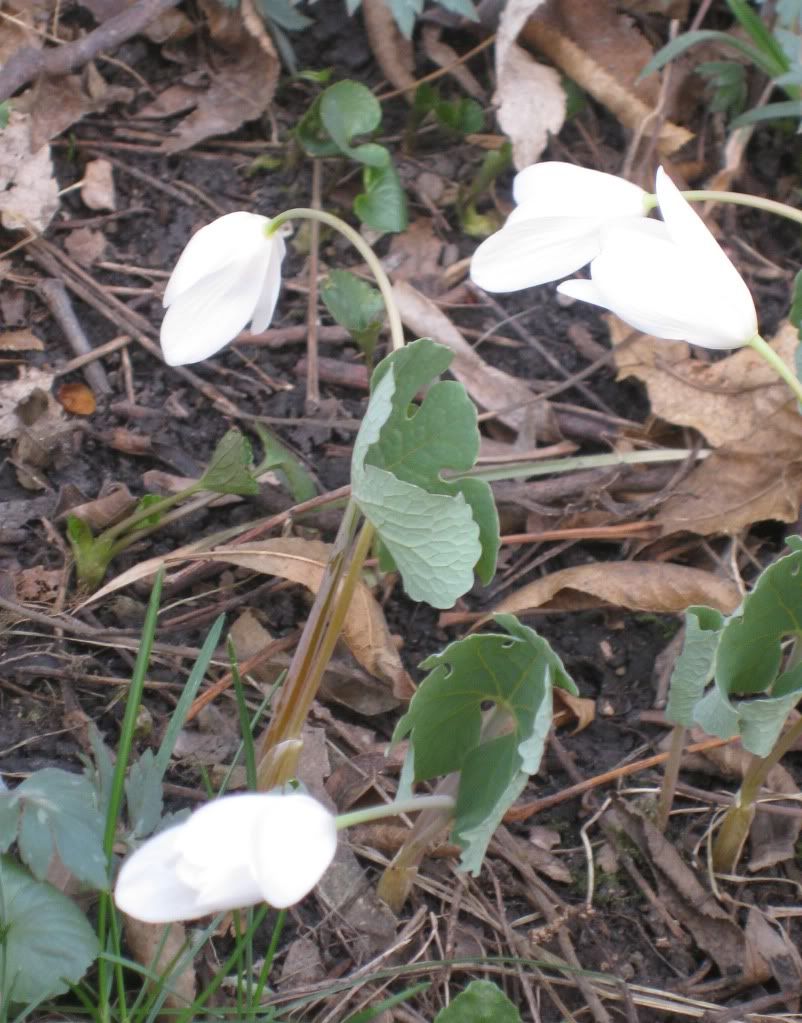
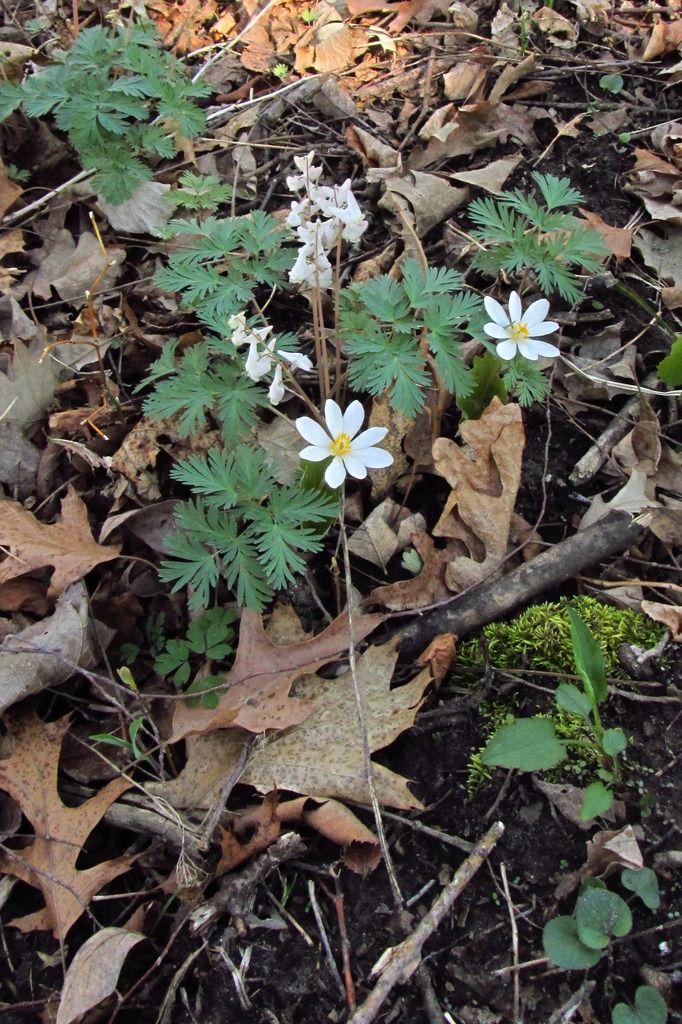

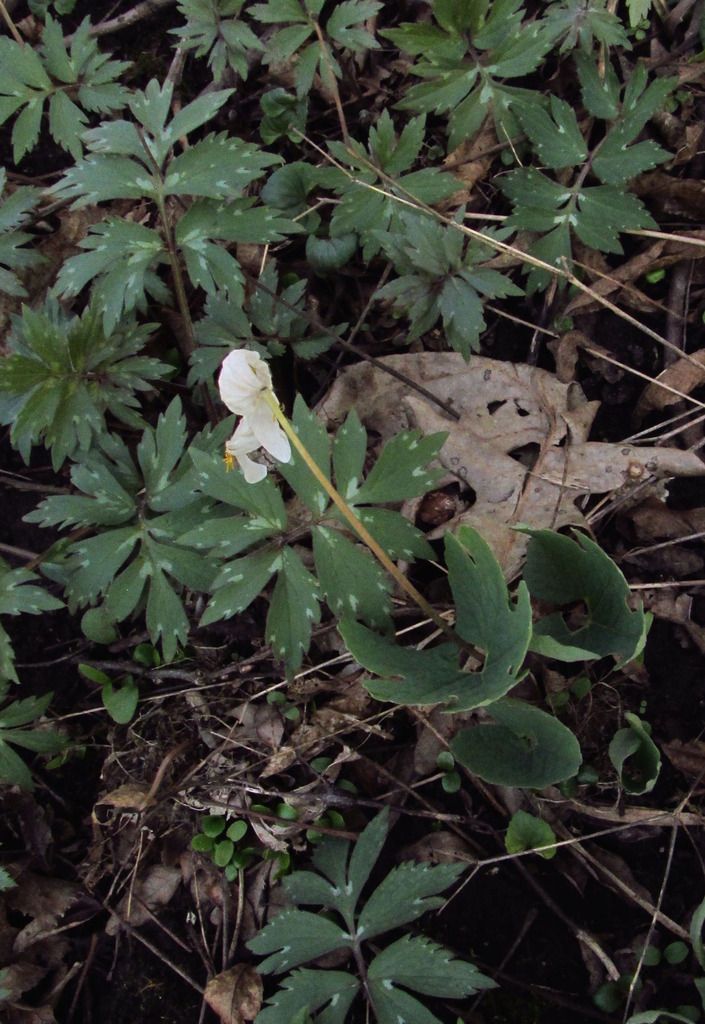
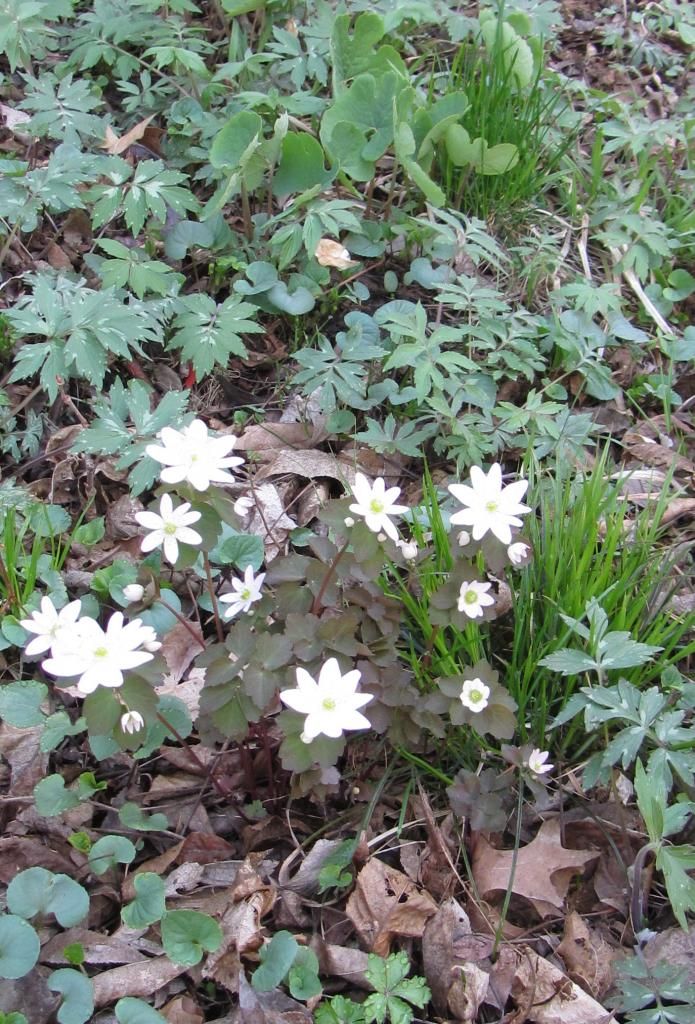
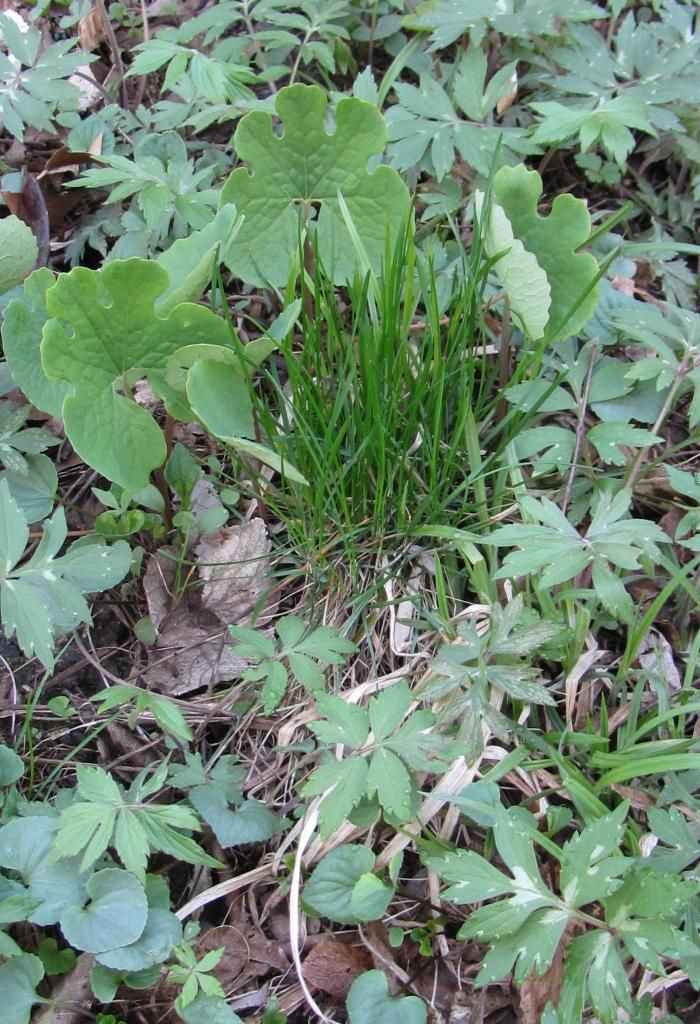
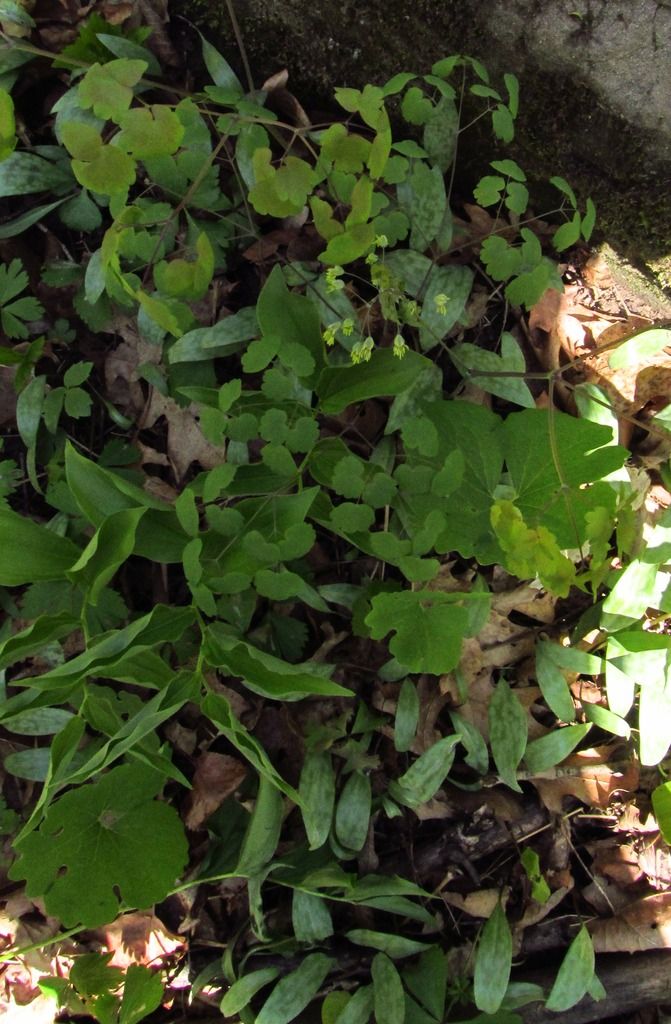
1 Comment
Sooo pretty!
Need to get out in woods soon!
PrairieFan Mon 24 Apr 11:45 PM